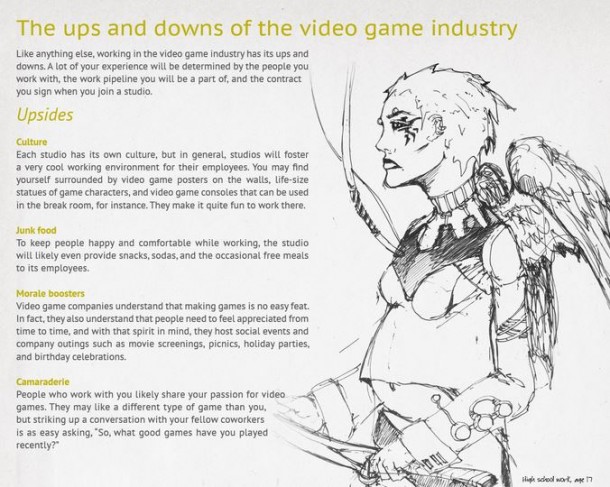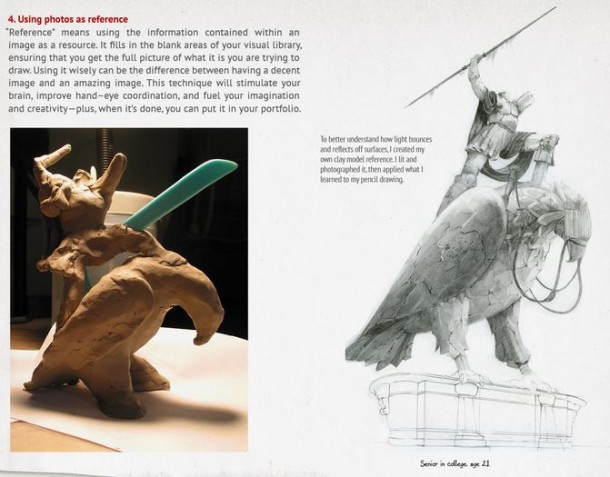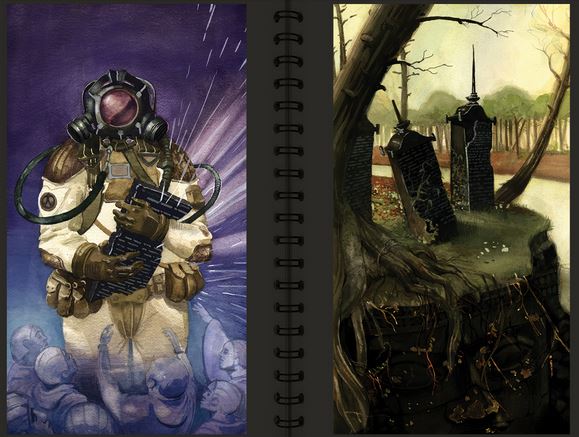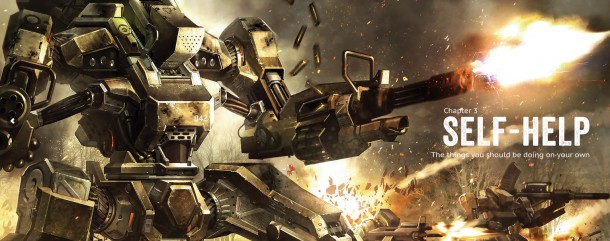There are generally two types of concept art books: Portfolios (collections of one or a few people’s work) or “Art Of” books that detail the creation of a movie or game. Both are terrific too look at, usually filled with tons of eye candy that make our creative sides drool. They showcase the end of the work, really; these are completed pieces.
But how do we get to there? How do we create this kind of art? It’s one thing to get inspired, but what do we do with that inspiration?
Eliott Lilly might have that answer. His latest book, The Big Bad World of Concept Art for Video Games, is an incredible starting point for those interested in the profession. It’s not only a collection of great artwork, tips and stories, it’s also quite possibly my favorite art book of the last decade.

Lilly takes a different approach to talking about concept art. Sure, this is a sort of portfolio book — his work, and the work of other artists, is scattered throughout — it’s more or less a guide to getting into the industry. The opening pages tell us about concept artists and ask us why we’re interested. It’s not always an easy career, and Lilly doesn’t cut corners in explaining that. There are ups and downs one will come across, and many hours of work and dedication needed to just survive in the industry, let alone making a significant dent. It can be daunting, but it needs to be said. Lilly does so in a straightforward way, explaining what an average day is like, where the “wins and losses” are and how to treat success and failure. His many years in the industry show well in the book, resulting in an incredibly comprehensive chapter just to kick us off.
In fact, it’s this experience that makes the book so intriguing. Reading it feels like we’re shadowing Lilly on his daily routine around his studio as he works on his next project. There are checklists and tips, how to prepare for assignments, and even what to do in case of disputes. We’re looking over the shoulder of someone who’s done this before, being spoken “to” instead of “at”.

As the curtain is peeled back we see the tools and processes that a concept artists utilizes. We find out where to draw inspiration from, as one section talks about how quick photography can lead to great creativity. We see Lilly’s artwork (dating as far back as his childhood) utilized to show his progression and expectations from the industry. The portfolio “how-to” section is especially appealing, as it not only shows off his great work but how to lay out our own in an appealing way. We even get interviews with some of the biggest names in the industry, like Nicolas “Sparth” Bouvier (Halo) and Ben Mauro.

It’s as if he’s laid out every card in his hand, even the secret ones that professionals typically hold so close to their chests. And he does it all in the name of education and sharing his passion for the industry with others.
Make no mistake about it, art still takes a special kind of talent and level of creativity to stand out. But Big Bad World at least level sets everyone, handing them the tools needed to give the profession a shot. It makes concept art very accessible, and the ideas and principles explained here work with virtually any kind of creative field. I wish there was a book like this when I was still in college, as it would have made understanding the process of getting into an industry much, much easier.

I don’t know if I can recommend this book enough. It’s easily the best guide on the subject to date, and one that will surely inspire readers to jump into the field. Eliott Lilly has put together a master class in video game concept art, without even asking us to lift a pencil.
The Big Bad World of Concept Art for Video Games by Eliott Lilly and Design Studio Press is available now at retailers and online for $29.95, clocking in at 144 terrific pages.
This review was based on a digital copy of the book sent to SideQuesting by the publisher. Images courtesy Design Studio Press and Eliott Lilly.


No Comments